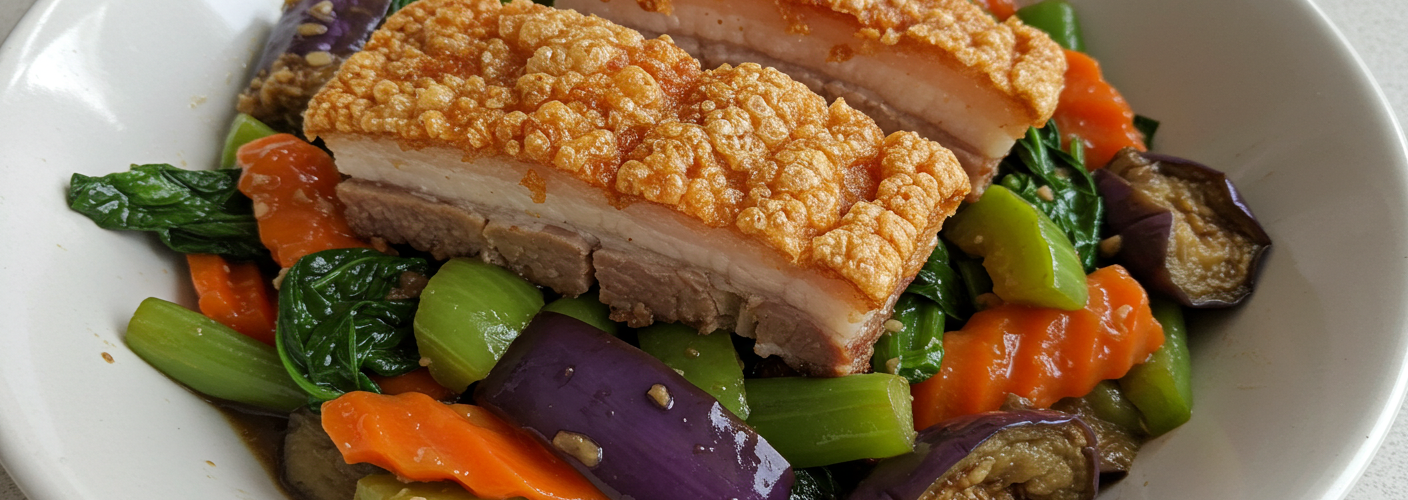When it comes to Filipino cuisine, few dishes are as beloved and celebrated as Pinakbet. Perfectly embodying the essence of the Philippines’ rich agricultural landscape, this dish not only tantalizes the taste buds but also tells a story of tradition and culture. One popular variation combines the heartiness of crispy deep-fried pork belly with a medley of fresh, nutrient-rich vegetables, making Pinakbet a true feast for both the eyes and the palate.
A Flavor Profile Like No Other
At its core, Pinakbet is a luscious vegetable stew. The main ingredients include a colorful array of veggies such as eggplant, bitter melon, squash, and string beans, all simmered together to create a harmonious blend. However, what truly sets this version apart is the addition of lechon kawali (crispy deep-fried pork belly). The savory crunch of the pork complements the soft, umami-rich vegetables, resulting in an irresistible combination that keeps diners coming back for more.
Pinakbet is traditionally flavored with fermented shrimp paste, known as bagoong, which adds a depth of flavor that elevates each bite to a new level. When paired with crispy pork belly, the salty savory notes of the bagoong interact beautifully with the rich, slightly crispy texture of the meat, ensuring a satisfying gastronomic experience.
Ingredients and Preparation
Creating the perfect Pinakbet at home begins with sourcing fresh, quality ingredients. Choose vegetables that are in-season for the best flavor and texture. The selection typically includes:
- Pork Belly: A cut that is rich in fat, providing that signature crispiness when properly fried.
- Eggplant: Adds a tender, slightly sweet taste.
- Bitter Melon: Introduces a unique bitterness that balances the dish.
- Squash: Offers a creamy texture when cooked and plays well with the other vegetables.
- String Beans: Adds a playful crunch, providing contrast against the softer ingredients.
- Tomatoes and Onions: These aromatics form the base of the stew, imparting a rich, fragrant flavor.
Cooking Instructions:
- Fry the Pork Belly: Start by boiling the pork belly until tender, then let it cool before frying it to a golden-brown crisp. This step is crucial, as it develops the rich flavors and iconic texture.
- Prepare the Vegetables: In a large pot, sauté the onions and tomatoes until fragrant. Add the vegetables in stages, starting with the firmer ones, such as squash and eggplant, and then incorporating the more delicate items like bitter melon and string beans.
- Season: Once the vegetables are partially cooked, add the shrimp paste, stirring well to mix the flavors.
- Combine: Finally, gently fold in the crispy pork belly, allowing the dish to simmer until everything is cooked through and flavorful.
- Serve: Pinakbet is best enjoyed hot, preferably served with a side of steamed rice to soak up the luscious sauce.
Conclusion
Pinakbet is not just a meal; it’s a celebration of Filipino culture and agriculture. The delightful marriage of crispy deep-fried pork belly with fresh vegetables creates a dish that is both satisfying and nourishing. Perfect for family gatherings or a cozy dinner at home, Pinakbet promises to be a household favorite that brings everyone to the table. So why not try your hand at making this Filipino classic and savor the flavors of tradition in every bite?




Add comment